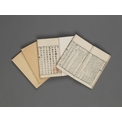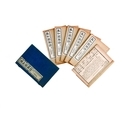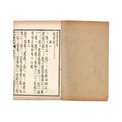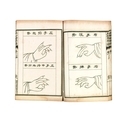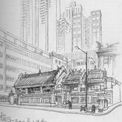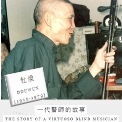Of the different Chinese instruments and music genres, the qin has the largest collection of musical scores in its legacy. Turning over a page of a qin manuscript, one often discovers much more than just tablatures of qin pieces. The editor’s insights and discussions about the tones, modes, theories, and construction of the qin are often also included for the convenience of advanced studies by future enthusiasts. Over 100 qin score collections have been handed down from ancient times and survive to this day. At least 3,000 qin pieces have been collectively recorded, which gives us more than 600 unique pieces after accounting for repeated ones.
The earliest surviving qin manuscript is an example of wenzipu (prose notation). It was copied during the Tang Dynasty and is known as the Jieshidiao Youlan (Elegant Orchid). The original copy is now in the collection of a Japanese museum. The manuscript describes the fingering details for the qin piece. The first verse of this notation, for example, reads, “Lay straight the middle finger about half a cun above the tenth position on the second string…” Almost one hundred Chinese characters are used to describe the fingering of the first few notes leading us to conjecture that it should have posed quite some difficulty for beginners.
By the late Tang Dynasty, a type of “abbreviated character notation” had emerged. According to folklore, this type of notation was developed by Cao Rou. They are known as jianzipu, as referred to by traditional qin handbooks. The structure of each puzi (notation-character) comprises abbreviated character forms. Each puzi is basically divided into an upper half and lower half. The upper half indicates how the left hand should press on the strings and specifies the position of the hui (marker). The lower half indicates how the right hand should play on the strings and which strings should be involved. Between these puzis are usually small characters, which indicate the action of the left hand in producing lingering tones after the right hand has played a plucked note, or which specify pauses.
The objective for the notation of qin pieces was traditionally to take note of the fingering techniques, with limited importance placed on recording musical elements such as melody, rhythm, tempo or dynamics. This approach set out a framework for techniques without outlining the shape of the music. Since the 20th century, qin notations have often made use of jianpu (the numbered musical notation) or the staff notation side by side with its jianzipu. No matter how precise and accurate a notation is, however, the knowhow of the actual operation of the instrument requires teaching from an instructor. Therefore, the face-to-face mode of instruction that aims at enlightening the student’s understanding is still crucial in the transmission of qin heritage.


